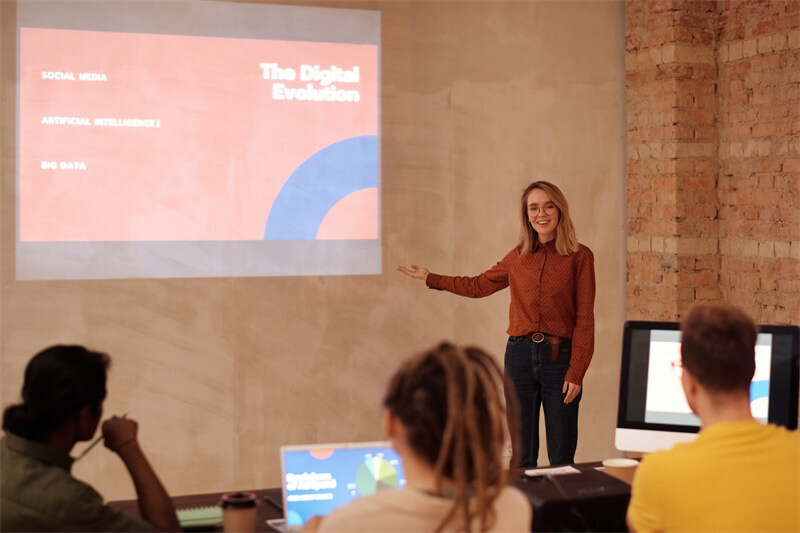All about ICT in Education? (Definition, Example & Importance)

Information and Communication Technology, or ICT classroom, integrates digital technologies to enhance learning and teaching processes. Its rise has transformed education significantly by providing access to vast resources, interactive learning platforms, and personalized learning experiences. For instance, online courses, virtual classrooms, and educational apps have revolutionized traditional teaching methods. ICT in teaching fosters collaboration, improves engagement, and allows for flexible learning, catering to diverse student needs. Its importance lies in fostering digital literacy, preparing learners for the modern workforce, and bridging educational gaps globally. ICT has revolutionized education, making it more accessible, inclusive, and effective.
Read on as we discuss the use of ICT in education and its role in a broader perspective.
Part 1: Meaning of ICT in Education
ICT in education means using various tools and resources, including computers, laptops, tablets, interactive whiteboards, educational software, online platforms, internet connectivity, and multimedia content. It aims to support and optimize the learning experience for students and improve the effectiveness and efficiency of teaching methods for educators.
The use of ICT in the classroom varies as it enables educators to present information in text, images, videos, and simulations that cater to diverse learning styles. Students can access knowledge from around the world, conduct research, collaborate with peers, and engage in self-paced learning.
ICT schools have the potential to transform traditional teaching and learning approaches and make education more engaging, accessible, and adaptive to the needs of modern learners. However, proper training for educators, adequate infrastructure, and a thoughtful approach it vital to truly enhances the learning experience and not become a distraction.
Part 2: Examples of ICT in Education
This section will open up four areas to showcase how ICT is important in education.
A. Integration of ICT in Classroom Instruction:
1. Interactive Whiteboards
Teachers use interactive whiteboards to present content more engagingly and dynamically. These whiteboards can display multimedia content, annotate, and interact with the material, encouraging student participation.
2. Multimedia Presentations
Educators create and use multimedia presentations incorporating text, images, videos, and audio to explain complex concepts effectively.
3. Digital Simulations
Simulations provide virtual environments where students can experiment and learn in a risk-free setting. For example, physics simulations can help students understand the principles of motion and gravity.
B. Online Learning Platforms and Virtual Classrooms:
1. Learning Management Systems (LMS)
LMS platforms like Moodle, Canvas, or Google Classroom offer online course management, content sharing, assessments, and communication between teachers and students.
2. Virtual Classrooms
Live virtual classrooms enable real-time interaction between teachers and students, including video conferencing, chat features, and collaborative tools for group discussions.
3. Massive Open Online Courses (MOOCs)
These platforms offer free or low-cost online courses, providing access to high-quality education from institutions worldwide.
C. Use of Educational Software and Applications:
1. Educational Games
Gamified learning apps and software make learning fun and engaging, promoting active participation and knowledge retention.
2. Language Learning Apps
Apps like Duolingo and Babbel are excellent new language-learning platforms with interactive lessons, quizzes, and speaking exercises.
3. Math and Science Tools
Software like GeoGebra and Wolfram Alpha have in-built interactive tools for visually exploring mathematical and scientific concepts.
D. Collaborative Tools for Communication and Project-Based Learning:
1. Online Discussion Forums
Students can engage in online discussions to share ideas, ask questions, and collaborate with peers.
2. Cloud-based Collaboration
Tools like Google Workspace (formerly G Suite) enable real-time collaboration on documents, presentations, and spreadsheets, promoting group work and creativity.
3. Project Management Software
Learners can use tools like Trello or Asana to plan, track, and organize their group projects effectively.
These are a few of how integrating ICT in education enhances learning experiences, fosters collaboration, and expands access to quality education.
Bonus: The Best 4K Webcam for Virtual/Online Teaching
If you want the best camera to start your virtual class, we suggest the upgraded OBSBOT Tiny 2. It is an excellent choice for virtual/online teaching, offering a range of impressive features, like its wide-angle lens that can capture more of the teaching space for a broader view of the classroom or teaching area.
Key Features:
- 4K Ultra HD Resolution: Delivers crystal-clear 4K video quality, ensuring sharp and detailed visuals during virtual teaching sessions. The high resolution is especially beneficial for clearly displaying texts, diagrams, and other educational materials.
- AI-Tracking: The webcam has advanced AI-tracking technology, which automatically follows the teacher's movements to keep them in the center of the frame as they move around the classroom or their teaching space.
- Whiteboard and Desk Mode: The whiteboard mode optimizes the camera settings for clear capturing of whiteboard content, which is ideal for explaining concepts with drawings or equations. The desk mode is perfect for close-up demonstrations of objects or manipulatives.
- Voice and Gesture Control: This webcam includes voice and gesture control features, so teachers can initiate a few in-built commands, like recording or zooming in/out, etc., without touching the camera or computer.
Thus, the OBSBOT Tiny 2 offers a comprehensive set of features specifically tailored to improve the online teaching experience for everyone.
Part 3: Importance of ICT in Education
The importance of ICT in education is plenty and not limited to just technology but a major boost to the quality of education.
Benefits of ICT in Education:
1. Enhancing Learning Experiences
ICT provides interactive and multimedia-rich learning materials. It makes lessons more engaging and effective, which results in better retention and understanding.
2. Access to Vast Information
Through the Internet and online resources, students and educators can access vast information for comprehensive research and exploration of various subjects.
3. Personalized Learning
ICT helps in adaptive and personalized learning experiences that cater to individual student needs, like learning style and pacing, eventually promoting academic success.
4. Global Connectivity
It fosters collaboration and communication between students, teachers, and experts worldwide, encouraging cross-cultural learning and expanding students' horizons.
5. Bridging Educational Gaps
ICT in schools helps bridge the educational gap since millions access quality education, especially in remote or underserved areas. It thus provides equal learning opportunities.
6. Preparing for the Digital Future
Integrating ICT in education equips students with essential digital literacy skills. It prepares them for the demands of the modern workforce and technology-driven society.
Part 4: FAQs about ICT in Education
Q1: What is an ICT Classroom?
An ICT classroom is an environment where Information and Communication Technology integrate into teaching and learning. It is equipped with digital devices like computers, interactive whiteboards, and educational software, providing students and teachers with access to digital resources and tools to enhance the learning experience. The ICT in the classroom promotes interactive, collaborative, and personalized learning so that students can acquire essential digital literacy skills and be ready for the digital age.
Q2: What Does ICT Stand for in Learning?
ICT stands for Information and Communication Technology in Education. It includes using digital technologies, including hardware, software, and communication networks, to facilitate information acquisition, storage, retrieval, and dissemination. ICT in learning involves integrating digital tools into educational processes, enhancing teaching methods, engaging students with multimedia resources, and fostering interactive and personalized learning experiences.
Q3: What is the Role of the Teacher in the ICT Classroom?
The role of a teacher in an ICT classroom is multi-faceted, as mentioned below:
- They act as facilitators, guiding students in effectively using digital tools and resources for learning.
- Teachers design and deliver lessons incorporating ICT to create engaging and interactive learning experiences.
- They also play a crucial role in providing technical support, troubleshooting issues, and ensuring the smooth functioning of technology in the classroom.
- Additionally, teachers must monitor students' progress, offer timely feedback, and adapt their teaching approaches to cater to individual learning needs in the ICT learning environment.
Conclusion
Hence, here we are to close our discussion on the role of ICT in education. This article was a detailed guide for any learner or teacher who is new to the world of online education. We laid out all the information about ICT in the classroom, its uses citing major examples and its importance. Lastly, we also mentioned the best webcam that you can use for the best audio-video output for your educative videos.
















